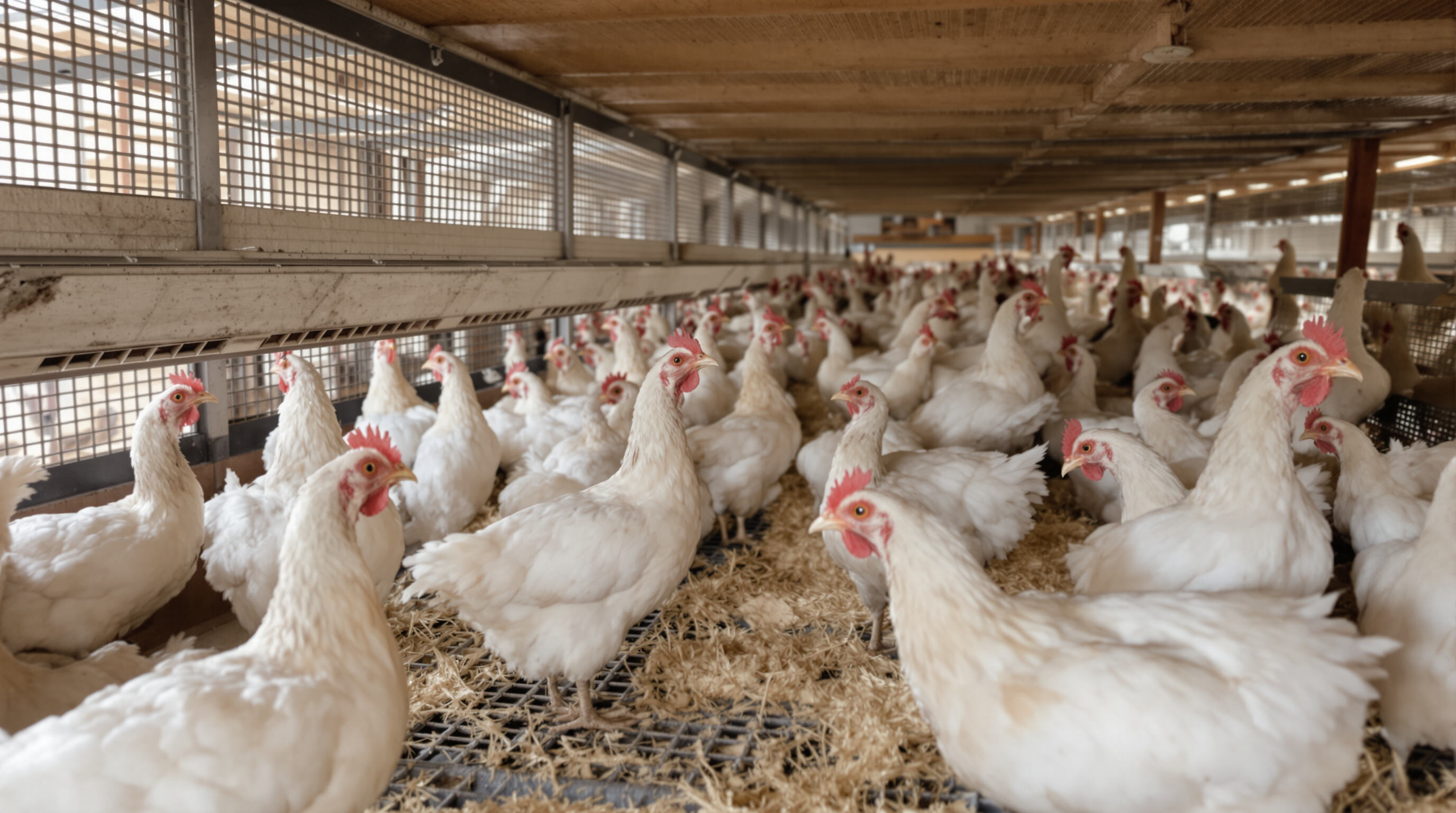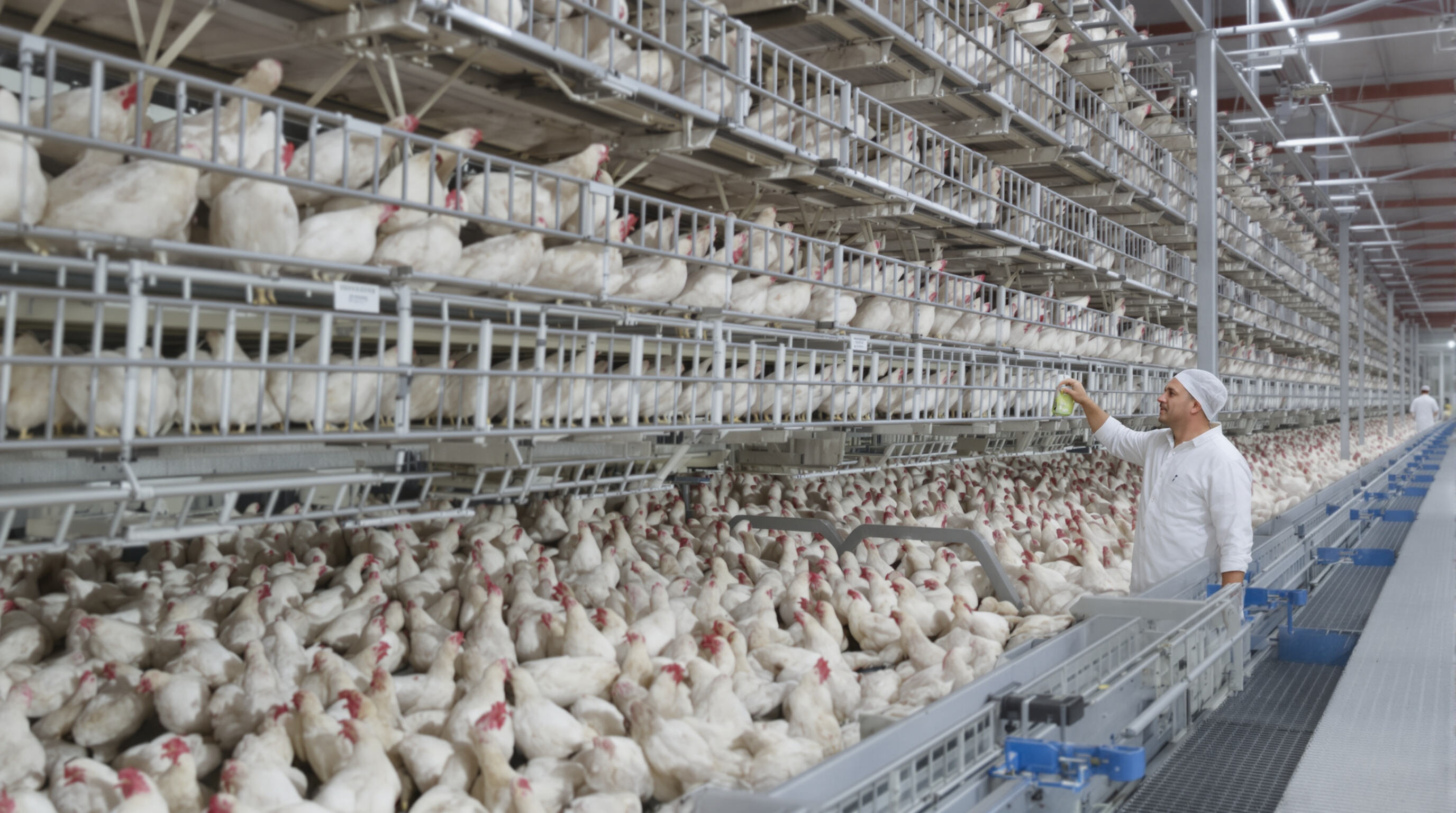Improved Hen Welfare Through Modern Chicken Layer Cage Design

Enabling Natural Behaviors with Enriched Cage Features
New cage designs for laying hens actually help improve their quality of life by letting them do what comes naturally like climbing, pecking at the ground, and building nests. Research from Pretoria University back in 2025 looked at around 12 thousand chickens and saw something interesting happen. When kept in these improved cages, the birds bathed in dust much more often (about 63% more) and used nesting spots correctly 41% of the time versus old style cages. What makes these modern setups work? They come equipped with scratch mats, high perches to rest on, and little private corners where hens can lay eggs without disturbance. These additions cut down on stress levels and seem to help with bone and muscle growth too. The poultry industry is slowly moving away from purely production-focused methods towards approaches that genuinely care about animal well being, though progress remains gradual across different regions.
Reducing Stress and Aggression via Behavioral-Focused Layouts
Thoughtful spatial design in modern cages significantly reduces stress-related behaviors. Providing 800 cm² per hen compared to 550 cm² in conventional setups lowers corticosterone levels by up to 37%, according to peer-reviewed research. Sloped flooring and anti-cannibalism features further minimize aggression while enabling smooth movement, contributing to a calmer flock environment.
Scientific Support for Welfare Improvements in Modern Cages
Research shows modern cage systems actually cut keel bone fractures down by around 40 percent while feather coverage improves by roughly 34 percent when compared to free range setups. What's interesting is that better animal welfare doesn't mean lower output either. Hens kept in these improved conditions still lay eggs consistently at about 92 percent efficiency throughout their 72 week laying period. This suggests good housing design can achieve what many thought impossible before - supporting bird health without sacrificing farm productivity.
Addressing the Debate: Are Enriched Cages Truly Better?
Cage-free setups get all the attention for being kinder to chickens, but the numbers tell another story about enriched cages. Birds living in these improved enclosures actually have around 78 percent fewer deaths compared to those raised on floors. Why? Well, they just aren't exposed to so many dangers like predators lurking around, diseases spreading through dirty conditions, and those pesky fights between flock members that can get pretty brutal sometimes. More and more farms certified for animal welfare standards are switching to this middle ground approach because it works better in practice while still meeting ethical expectations. Some operations report saving money too since healthier birds mean less waste overall.
Maximizing Productivity and Operational Efficiency with Automated Chicken Layer Cages
Modern chicken layer cage systems use automation to boost output and streamline farm operations, addressing key challenges in commercial poultry production.
Precision Nutrition Delivery via Automatic Poultry Feeders
IoT-enabled feeders customize nutrition based on hens’ age, weight, and laying stage, improving feed efficiency and reducing costs by 18% (Poultry Tech 2023). Real-time monitoring prevents overfeeding—a common issue in manual systems—and ensures optimal intake throughout the production cycle, as shown in recent poultry automation studies.
Minimizing Waste and Optimizing Feed Conversion Rates
Automated systems achieve a feed-to-egg ratio of 1.45:1—22% better than traditional methods—through targeted innovations:
- Gravity-fed waterers eliminate spillage
- Anti-waste trough designs retain 97% of feed
- Sensors detect uneaten food for immediate adjustment
These features collectively reduce input waste and support consistent egg yields.
Space Optimization and Labor Cost Reduction
Modular cage configurations allow 15% higher bird density without overcrowding, while automated egg collection and manure belts cut labor needs by 40% (AgriEcon 2023). As a result, mid-sized farms can operate efficiently with just 2–3 workers instead of 5–7, significantly improving operational scalability and profitability.
Superior Disease Control and Hygiene Management in Cage Systems

Preventing Pathogen Spread with Elevated, Sanitized Housing
Putting hens up off those wire floors makes a real difference in their health according to recent findings from the Poultry Health Journal back in 2023. The data shows something pretty significant - around 62% less contact with poop when using modern cage systems instead of traditional floor housing. These new setups come with antimicrobial coatings on surfaces plus sloped floors that just naturally drain away moisture, keeping everything much drier overall. Bacteria doesn't stand a chance in this environment. And speaking of bacteria control, there was another interesting report published last year in Poultry Science. Researchers looked at how different cleaning routines affect salmonella levels. What they discovered? Automated cages with multiple cleaning steps cut down salmonella cases by nearly three quarters compared to older methods still used in many farms today.
Automated Manure Removal and Air Quality Enhancement
The self-cleaning conveyor belts take care of manure removal anywhere from four to six times each day, which keeps those pesky ammonia levels under 10 ppm that's considered safe for breathing. No more scraping by hand, something that studies show actually raises workers' chances of getting exposed to pathogens by around 34% according to the Occupational Health Review back in 2022. Add in some smart ventilation controls and these systems can keep humidity right around 45 to 55 percent. That makes it much harder for nasty stuff like bird flu and Newcastle disease to spread through the barns.
Economic Advantages and Long-Term ROI of Chicken Layer Cage Adoption
Modern chicken layer cage systems deliver strong financial returns through automation, precision management, and long-term efficiency gains. Industry analyses from 2024 show a 17–22% reduction in labor costs and an annual ROI of $2.10–$3.80 per bird when upgrading from conventional setups.
Real-Time Monitoring and Data Analytics for Farm Optimization
Cloud-connected sensors track feed intake, egg production, temperature, and humidity in real time. This data enables proactive adjustments—such as modifying feeding schedules during heatwaves—to mitigate stress and sustain output. Farms using predictive analytics report 9–12% higher egg yields due to optimized environmental and nutritional management.
Calculating Long-Term Profitability and Sustainability Gains
A 2023 ROI study comparing traditional and automated cage farms revealed significant improvements:
| Metric | Conventional Farm | Automated Cage Farm | Improvement |
|---|---|---|---|
| Feed conversion rate | 2.4:1 | 2.1:1 | 12.5% |
| Mortality rate | 6.8% | 3.2% | 53% |
| Labor hours/1k hens | 18 | 7 | 61% |
Lower energy consumption (15–22%) and integrated manure recycling further improve sustainability over the 5–7 year lifespan of the equipment.
Case Study: Financial Impact After Upgrading to Automated Cages
A mid-sized commercial farm phased in automated chicken layer cages across 30% of its barns. Within six months, it achieved:
- 19% higher egg production
- $18,200 in annual savings from reduced labor and feed waste
- A 14-month payback period on initial investments
By year three, profit margins had increased by $9.60 per hen—a 34% improvement driven by enhanced disease control and stable laying rates. Similar results were reported by 82% of early adopters in agritech feasibility assessments.
Sustainable Transition Strategies for Modern Chicken Layer Cage Integration
Phased Implementation for Small and Medium-Scale Farms
Going modern doesn't mean tossing out everything old school. Plenty of small to medium farms have made the switch to automated chicken layer cages without breaking the bank all at once. They usually start with the big ticket items first, things like automatic feed dispensers or those belt systems for cleaning up after the birds. According to industry reports from last year, around 58 percent of operations housing under 10 thousand hens took about three to five years to fully upgrade their facilities. This gradual approach helps keep cash flow manageable and gives farm workers enough time to learn how these new systems work before expecting them to hit peak efficiency right away.
Leveraging Incentives to Offset Initial Investment Costs
The initial expense still stands in the way for many farmers looking to upgrade their facilities, though various incentive programs are helping to bring down those barriers. More than forty states across America now provide tax rebates when farmers install better living conditions inside cages, including things like perches where birds can roost or dust baths which help keep them clean and healthy. At the same time, federal funding is starting to flow toward initiatives aimed at making farm animals happier while also lowering pollution levels. Some automated cage systems actually qualify for partial reimbursement covering between fifteen to twenty five percent of total costs. Another approach gaining traction involves lease arrangements with equipment suppliers. These deals allow operations to spread out payments over time instead of paying everything upfront all at once. Industry research suggests this method typically reduces initial investment requirements by around thirty percent according to recent feasibility studies conducted within the sector.
Balancing Animal Welfare, Economics, and Industry Realities
Getting from good intentions to real results means finding where ethics meet economics and operations in practice. Studies show that enriched cages cut down on pecking injuries by around 60 percent when compared to free range setups according to research published in Poultry Science last year. But these cages need smart design work since there are tradeoffs involved too, like higher energy costs for maintaining proper temperatures inside. When poultry farms bring together vets, engineering teams, and animal welfare inspectors during planning stages, they tend to hit those EU space requirements while still keeping production levels up. Some of the best success stories come from farms that actually look at how different chicken breeds behave naturally and adjust their cage designs accordingly. This approach turns what might seem like just extra spending on animal welfare into actual improvements across the board for bird health, operational efficiency, and bottom line profits.
FAQ
Are enriched cages safer for hens compared to cage-free systems?
Yes, enriched cages provide a more controlled environment, reducing exposure to predators and disease. This results in fewer hen deaths and healthier living conditions.
How do modern cage designs enhance hen welfare?
Modern cage designs include features like scratch mats, high perches, and private nesting areas that support natural behaviors and reduce stress.
What are the economic advantages of automated cage systems?
Automated systems reduce labor costs, improve feed efficiency, and enhance disease control, leading to long-term profitability and sustainability gains.
Can small and medium-sized farms afford the transition to automated cages?
Yes, phased implementations and incentives like tax rebates and lease arrangements can make the transition affordable for these farms.
Table of Contents
- Improved Hen Welfare Through Modern Chicken Layer Cage Design
- Maximizing Productivity and Operational Efficiency with Automated Chicken Layer Cages
- Superior Disease Control and Hygiene Management in Cage Systems
- Economic Advantages and Long-Term ROI of Chicken Layer Cage Adoption
- Sustainable Transition Strategies for Modern Chicken Layer Cage Integration
- FAQ

